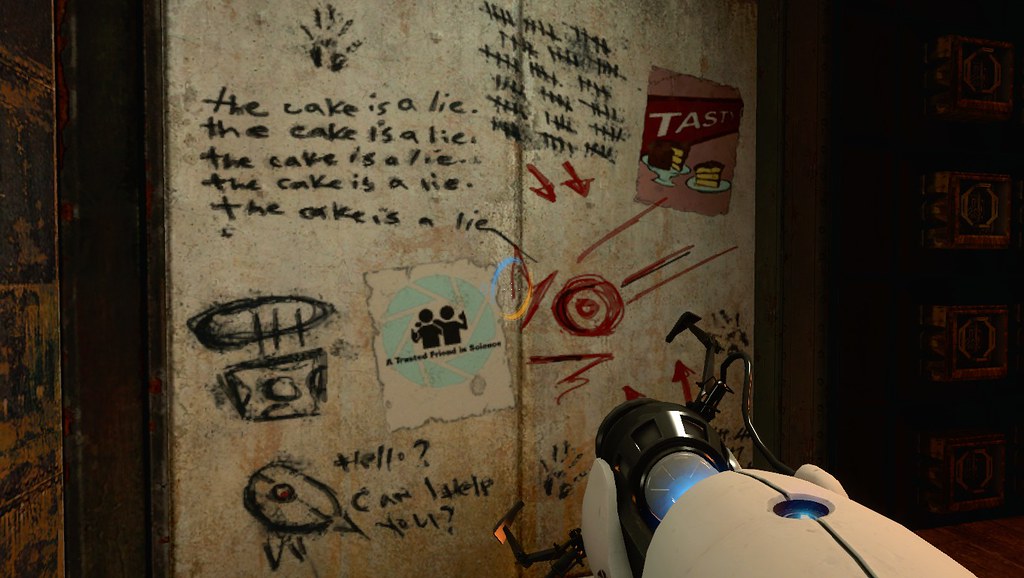
Going with the flow: How games can improve learning
2023-11-15
Video games need better accessibility
2024-01-31Why you should create stories for your educational games
Storytelling has existed since the early days of video games, though in the early days the technology limited the ability to adapt intricate stories. As they evolved, games would soon make stories an integral part that enhance the player’s experience - and in some cases, become the cornerstone.
Evolution & Types
Most notably, we’ve seen games evolve into new methods and mediums to create their worlds and the stories that fill them. As a first approximation, you can divide storytelling in video games in two categories:

Linear
Much like other forms of media, linear video games take their players down a singular path that they must follow. There is a singular story, and a single sequence of events. Though they might occasionally offer hidden treasures or off-the-beaten-path Easter eggs, there is a linear flow that players may not divert from.
Example: In the Prince of Persia franchise, the player follows its titular character on his adventures to save his kingdom from various dangers. In the games, the path is laid via different platformer puzzles and battle stages. There is only one way forward, and the player must put their skills into finding out how to travel it.
The advantages of linear storytelling is that it offers its players the same identical experience, one they all share and can discuss and connect over. Additionally, it takes the pressure of making plot-changing decisions off the player.
For developers, it means they get to ensure that it's their story that reaches them. On the other hand, by seizing this control, developers assume full responsibility of crafting an ironclad story that satisfies everyone.

Non-linear
As video games evolved and new genres have appeared (namely, “open world” games), we’ve seen storytelling evolve as well. This evolution allows them to accommodate the nature of the worlds they take place in, as well as personalize the experiences of their players. Games such as these allow players to forge their own paths and choose how (and if) they follow the rules of the game.
One example of such games is the Dark Souls series. In these games, players are pointed towards a certain path by way of quest-givers they encounter on their journey, who send them out on missions. Players have complete control of the story: they can choose whether to accept the quests, what order of quests they want to go in, and can even decide to eliminate the quest-givers. These decisions ultimately lead to a different story and experience for the players.
Non-linear games have risen in popularity for their personalized nature. They offer players some control of the story and adapt to their decisions. When it works well, the player feels invested in the story, as their actions now dictate the game - not the other way around. They perceive whatever events occur as the consequence of their decisions and therefore are more justified and believable.

Environmental storytelling
Not all storytelling happens through dialog or cutscenes. Through their organically immersive and interactive nature, games are able to utilize their visual design in order to create or complement stories. This is called “environmental storytelling.”
For example, in the puzzle game Portal, a robot named GlaDos subjects the player to several tests of mounting difficulty, with the promise of celebrations and cake at the end of the “experiment”. In the last few test chambers, several openings to the backdoors of the lab are hidden. In there, you will find several hidden rooms that are noticeably disheveled and decrepit - a stark contrast to the pristine test chambers. Cryptic messages fill the walls, all of which warn you of GlaDos’s dark intentions to throw you into a pit of fire instead.
Storytelling and learning
Good stories have a way of making durable impressions on their recipients. How? By evoking emotions, which create lasting memories.
The stronger the emotion, the more that story imprints in one’s memory. By creating compelling narratives, our players become emotionally attached and invested in the characters and the worlds they inhabit. That attachment extends to the rules of the world and the characters’ backstories - both of which could potentially be inspired from real-life facts and/or history
When it comes to communicating stories, video games have another trick up their sleeve that other forms of media simply can’t match - interactive simulations of an experience.
The Metro games are a good testament to that. Starting out as an interactive blog series, then a novel, the series takes its readers on a journey in a post-apocalyptic Moscow. Set mostly in the underground railway system of the city, the series goes beyond a simple dystopian tale, often offering social and philosophical critique.
However, most of the events and settings in which the story takes place can easily be unfamiliar to those who have not lived in Russia. By simulating the Moscow railway underground and allowing its players to roam around as they navigate the story, the series gives them the experience of living in the city and using its subway system.
In other words, video games place ideas in meaningful and emotional contexts, providing a richer understanding and lasting memories.
Stories make for better learning: The REXplorer tale
REXplorer is a gamified tourism experience created in Regensburg, Germany. Visitors to the city are given a series of quests to complete around different historical monuments. As “scientific assistants”, they are tasked with exploring strange phenomena occurring with the help of apparatus that is given to them.
At each location, they conjure “spirits of the past” by waving their devices like wands. Once these figures appear, they recount their stories and explain the significance of the monuments they are visiting. Each spirit has unique characteristics, stories, and mannerisms, and can interact with visitors in their own ways. Every day, the person who visits the most places and collects “magic” is declared the winner.
A study diving into this has found that the stories captivated people, so much so that some would repeat their encounters simply to listen to them again. In fact, the subjects of this study found themselves so taken by the game that they unknowingly ignored crucial traffic rules and even put themselves in danger on some occasions.
Considerations for using storytelling in educational games
When it comes to using storytelling in educational games, there are three main factors to keep in mind:
Player behaviors
Gamers vary in myriads of ways - from demographic divisions like age and gender, to what platform they play on and whether they like to play alone or with others.
But most importantly, different players seek different experiences: they have different motivations to play, and a million and one ways to do it. This also includes the way they like to experience storytelling, and the level of action and investment it requires of them.
Game genre
Different games lend themselves to different styles and mechanisms of storytelling. Adventure games may be better suited for linear stories, while open-world games are a natural fit to less constrained methods.
Visual novels are heavily based on narrative, and work best when the story has strong characters that can take center stage. RPGs are suited for most types of storytelling, as they rely heavily on telling a tale in order to get their players invested. If you are making a puzzle game, then environmental storytelling is really the way to go. Just as they would be solving the puzzles of the game, the player could also be piecing together the story (“The Witness” is a good example of such games).
Sometimes, your storytelling could be there to make sense of the different developments and additions made to the game - which stays mostly the same (ex. Fortnite), while some games, such as sports games, may not even be built for storytelling at all.
Balancing education & entertainment
While engagement and investment in our games is something we want in order to help make education fun, this makes for a double-edged sword. Sometimes, creating captivating stories can come to the detriment of (some of) the educational value of the game.
For instance, while the participants of the REXplorer study were enamored by the stories and the characters, some claimed they felt the educational content was little in comparison. What’s more, the study also found that, when asked about their learnings of the sites, the majority of participants would first recall the fictional characters they met, and in greater detail than the historical information.
The takeaway from this is that the story will serve the players the same as the game itself: entertainment first, education second. Think of it as a gateway into the player’s curiosity.
Long story short
Stories have a way of conveying information that contextualizes facts and illustrates them. They help their consumers gain a deeper understanding, and create an emotional connection that motivates them to stay engaged.
For years now, video games have been revolutionizing storytelling by introducing new mediums to create even deeper involvement from their players. These are all attributes that can benefit anyone looking to better their methods of learning.
With the right tools, we can turn any educational topic into a playful learning experience.


